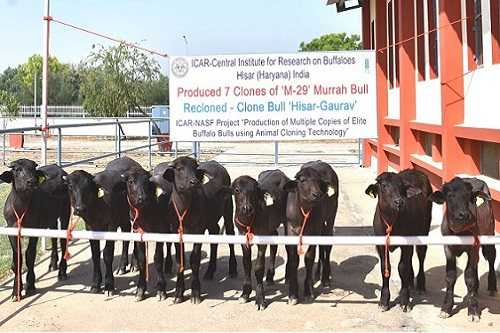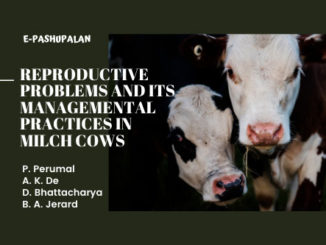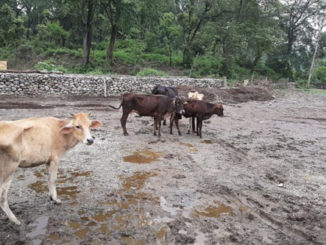Cloning is a complex process that cause exactly copy to the genetic or inherited traits of an animal {Donor} Livestock species that scientists have successfully cloned are cattle. sheep, goat and swine. Scientists have also cloned mice,. Rat, rabbit, cats, mules horses and dog.
Cloning entitles the transfer of a single cell of a multiple cell embryo obtained from superior cow into cytoplasm of an enuleated recipient oocyte. Theoretically it is possible to produce 1000 genetically identical animals by serial nuclear transplantation.
Following procedures are adopted for cloning in cattle
Nuclear transplantation
In this techniques 2n nucleus of blastomere resulting from first six or seven cleavage division is collected and transferrel to enucleated embryo. This embryo may be either one cell embryo or unfertilized embryo/oocyte?
Identical twin from later stage embryo:
- This involves splitting of cattle embryo at later stage of development.
- Splitting is done at late morula or early blastocyst stage.
- Demiembryo produced from good quality blastocyte results in 50% or above pregnancy.
- If two embryos are transferred to a recipient the pregnancy rate is almost same like those receiving single intact embryo.
Identical twin from quarter embryo
- At the stage of late morula or blastocyst stage calves are produced from quarter of embryo. However, survival rate is half than demi embryos. So far reference is not available in respect of birth of calf from less than one quarter of their original cell number.
- Splitting and quartering are successfully done with the help of IVF and embryo micro-manipulation.
- The IVMF (invitro-maturation fertilization & culture) embryo can be micro-manipulated at 8-16 cell stage.
- When even half of total number of blastomeres are removed from 2-16 cell IVMFC embryo, it does not affect development to the blastocyst stage.
- Four identical calves can be produced by this method.

Producing clone by fusing whole nucleated blastomere
- A slit is made on zona pellucid of secondary oocyte of sheep at a point close to the 1st polar body.
- The oocyte is enucleated by aspirating the polar body & nucleus by a micropipette.
- A nucleated blastomere is introduced in the perivitellive space of the enucleated oocyte with the help of a micropipette.
- The desired fusion of the blastomere is achieved with ooplasm of the oocyte by electrofusion.
- The cytoplasm of the enucleated oocytes has the ability to reprogramme the donor nucleus.
- The reconstituted embryo will have normal development.
- The embryo develops upto blastocyst stage either in ligated sheep oviduct or in a IVF culture.
- After one week the blastocyst is transferred to recipient or cryopreserved.
Cloning from somatic cell
The cloning from somatic cell is not successful because cellular differentiation during development of embryo is associated with modification of nucleus. So after embryo losses totipotency at more advanced stage its nucleus need to be redifferentiated. Thus the basis problem of cloning from somatic cell of body is that after 8 cell stage embryo looses its totipotency and through DNA is the basic material of a cell, according to position of DNA of a particular cell the DNA is programmed to perform a particular function according to character of the cell.
It is the work of Eyen Willmut of Ruslin Institute Scotland (1996) that removes this stumbling block. He selects a cell from udder of a dorset sheep. The cell is put in the culture with reduction of nutrition upto 1/20th part than the normal. Due to deficient nutrition cell division is stopped. Within 5 days cells become inactive. In this inactive stage the DNA goes back to previous stage and thus become open to reprogramming of gene expression.
- Thereafter one unfertilized egg is collected from a black face sheep.
- This unfertilized egg is enucleated.
- The reprogrammed nucleus collected from dorset sheep is inserted in enucleated oocyte.
- Egg is activated by electro-fusion cell division is initiated.
- After 6 days culture in IVF system the embryo is placed in surrogate mother of black face sheep.
- After normal gestation period birth to a sheep of dorset breed named ‘DOLLY’ takes place. It is cloned animal from somatic cell of udder.
Human clone
Scientist at Massachusetts based Advance cell technology of USA claimed to produce 1st human clone in 1999.
- The embryo was produced from the cells of skin collected from the leg of a man.
- The cells were subjected to reduced nutrition for reprogramming.
- There after, the treated DNA was inserted into enucleated ovum of a cow.
- A male embryo was thus produced and the same was developed upto 14 days.
- It was then incinerated just before evidence of nervous system appeared.
The intention of the research was to produce embryonic stem cell from which replacement of human tissue can be grown and be used for treatment of varied condition e.g. leukemia, diabetic & Parkinson’s disease.






Be the first to comment